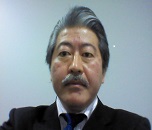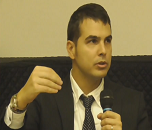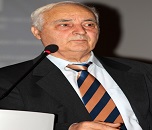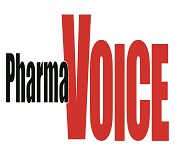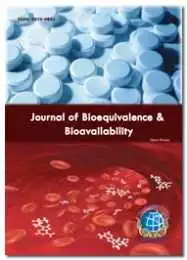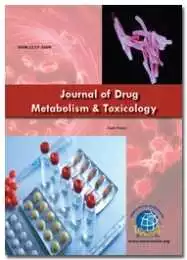Theme: Biopharmaceutics the Life Within Drugs
Biopharma 2016
ConferenceSeries Ltd invites all the participants from all over the world to attend '2nd International Conference & Expo on Biopharmaceutics and Biologic Drugs’ during September 14-16, 2016 in San Antonio, USA which includes prompt keynote presentations, Oral talks, Poster presentations and Exhibitions.
The Biopharma 2016 offers a best platform with its well organized scientific program to the audience which includes interactive panel discussions, keynote lectures, plenary talks and poster sessions on the topics Biopharmaceutics, Drug delivery, drug toxicity research, Novel Approaches, Product Development, Biowaiver Approaches, current issues in Bioequivalence of Oral Products, Pharmaceutical Innovation in the 21st Century, new scientific approaches to international regulatory standards. The conference invites delegates from Biopharma laboratories, Pharmacists, Academicians, Clinicians, Researchers, Health care professionals, students, business delegates and Young researchers across the globe providing a better podium, interconnecting the latest research, technological developments in the arena as well as therapeutic aspects. ConferenceSeries Ltd organizes a conference series of 1000+ Global Events inclusive of 600+ Conferences, 500+ Upcoming and Previous Symposiums and Workshops in USA, Europe & Asia with support from 1000 more scientific Societies and publishes 700+ Open Access Journals which contains over 50000 eminent personalities, reputed scientists as editorial board members.
Track 1: Biopharmaceutics
Biopharmaceutics is defined as the study of factors influencing the rate and amount of drug that reaches the systemic circulation and the use of this information to optimise the therapeutic efficacy of the drug products. The process of movement of drug from its site of administration to the systemic circulation is called as absorption. The concentration of drug in plasma and hence the onset of action, and the intensity and duration of response depend upon the bioavailability of drug from its dosage form. Bioavailability is defined as the rate and extent (amount) of drug absorption. Any alteration in the drug’s bioavailability is reflected in its pharmacological effects. Other processes that play a role in the therapeutic activity of a drug are distribution and elimination.
Relevant conferences:
Conference on Generic Drug Market and Contract Manufacturing Oct 31- Nov 02, 2016 Valencia, Spain; 10th Conference on Pharmaceutics and Novel Drug Delivery Systems March 13-15, 2017 London, UK; 6th Asia-Pacific Pharma Congress July 11-13, 2016 Kuala Lumpur, Malaysia; 9th World Drug Delivery Summit June 30-July 02, 2016 New Orleans, USA. European Federation for Pharmaceutical Sciences (EUFEPS), Swiss Society of Industrial Pharmacists (SSIP), Accreditation Council for Pharmacy Education (ACPE), Association of British Healthcare Industries (ABHI), Association of the British Pharmaceutical Industry (ABPI).
Track 2: Novel Approaches in Biopharmaceutics
The overall aim of this research program is to develop novel principles for specific drug delivery and targeting to the active site by using complex in vivo models. An innovative, cutting edge and multi-disciplinary collaboration using clinical models will include research teams from: pharmaceutical technology, material science, biopharmaceutics and pharmacokinetics, drug metabolism, toxicology, oncology, gastroenterology, endocrinology, urology and regulatory science.
Relevant conferences:
Conference on Generic Drug Market and Contract Manufacturing Oct 31- Nov 02, 2016 Valencia, Spain; 10th Conference on Pharmaceutics and Novel Drug Delivery Systems March 13-15, 2017 London UK; 6th Asia-Pacific Pharma Congress July 11-13, 2016 Kuala Lumpur, Malaysia; 9th World Drug Delivery Summit June 30-July 02, 2016 New Orleans, USA. Association for Pharmaceutical Technology(APV), National Pharmacy Association (NPA), Dutch Society for Clinical Pharmacology & Biopharmacy, European Association of Clinical Pharmacology and Therapeutics (EACPT), The International Society for Biopharmaceutical Statistics (ISBS), Chinese American BioPharmaceutical Society.
Track 3: Drug Discovery & Development
Drug discovery involves the use of high throughput screening techniques to identify new compounds, both synthetic and natural, as novel drugs. Unfortunately, this approach has yielded very few successes in the field of anti-infective drug discovery. The identification of both molecular targets that are essential for the survival of the pathogen, and compounds that are active on intact cells, is a challenging task. Even more formidable, however, is the requirement for appropriate potency levels and suitable pharmacokinetics, in order to achieve efficacy in small animal disease models.
Relevant conferences:
2nd Conference on Drug discovery and Designing Oct 24-26, 2016 Istanbul, Turkey; Conference on Generic Drug Market and Contract Manufacturing Oct 31- Nov 02, 2016 Valencia, Spain; 9th World Drug Delivery Summit June 30-July 02, 2016 New Orleans, USA; 10th Conference on Pharmaceutics and Novel Drug Delivery Systems March 13-15, 2017 London UK; 6th RSC / SCI symposium on GPCRs in Medicinal Chemistry June 13-15, 2016 Verona, Italy. Accreditation Council for Pharmacy Education (ACPE), Association of British Healthcare Industries (ABHI), Association of the British Pharmaceutical Industry (ABPI), National Pharmacy Association (NPA), Dutch Society for Clinical Pharmacology & Biopharmacy, European Association of Clinical Pharmacology and Therapeutics (EACPT)
Track 4: Drug Elimination & Clearance
Drugs are removed from the body by various elimination processes. Drug elimination refers to the irreversible removal of drug from the body by all routes of elimination. The declining plasma drug concentration observed after systemic drug absorption shows that the drug is being eliminated from the body but does not indicate which elimination processes is involved. Drug elimination is usually divided into two major components: excretion and biotransformation. Drug excretion is the removal of the intact drug. Non-volatile drugs are excreted mainly by renal excretion, a process in which the drug passes through the kidney to the bladder and ultimately into the urine. Other pathways for drug excretion may include the excretion of drug into bile, sweat, saliva, milk (via lactation), or other body fluids. Volatile drugs, such as gaseous anaesthetics, alcohol, or drugs with high volatility, are excreted via the lungs into expired air. Drug elimination in the body involves many complex rate processes. Although organ systems have specific functions, the tissues within the organs are not structurally homogeneous, and elimination processes may vary in each organ, drug elimination was modelled by an overall first-order elimination rate process. Clearance may be defined as the volume of fluid cleared of drug from the body per unit of time. The units for clearance are millilitres per minute (mL/min) or liters per hour (L/h). The volume concept is simple and convenient, because all drugs are dissolved and distributed in the fluids of the body.
Relevant conferences:
Conference on Generic Drug Market and Contract Manufacturing Oct 31- Nov 02, 2016 Valencia; 6th Conference on Pharmaceutical Regulatory Affairs and IPR Sep 29- Oct 01, 2016 Miami, USA; 9th World Drug Delivery Summit June 30-July 02, 2016 New Orleans, USA; 2nd Annual Formulation & Drug Delivery Congress 2016 May 18-19, 2016 London, UK. National Pharmacy Association (NPA), Dutch Society for Clinical Pharmacology & Biopharmacy, European Association of Clinical Pharmacology and Therapeutics (EACPT),
Track 5: Array of Clinical Trials in Biopharmaceutics
An important component to this mission across the biopharmaceutical industry is identifying and solving common issues that compromise the success of a clinical development program – the shared pathway to safer and more clinically meaningful medicines. Although there has been progress across this range of road blocks by individual companies, the underlying economics continue to threaten the R&D business model. The challenges facing the pharmaceutical industry make the choice of a strategic discovery partner more important than ever. At Array Biopharma we offer a fully integrated, world-class small molecule drug discovery platform. Our experience allows us to harness this capability to move rapidly from hit identification through IND and clinical proof of concept. During a research project, we seamlessly integrate proprietary compound collections, state of the art structural biology and computational chemistry with highly experienced medicinal chemists and biologists leading from the bench.
Relevant conferences:
7th World Congress on Bioavailability and Bioequivalence Studies Summit August 29-31, 2016 Atlanta, USA; 3rd World Congress on Pharmacology August 08-10, 2016 Birmingham, UK; 4th Global Experts Meeting on Neuropharmacology September 14-16, 2016 San Antonio, USA; 10th Conference on Pharmaceutics and Novel Drug Delivery Systems March 13-15, 2017 London, UK; 6th Asia-Pacific Pharma Congress July 11-13 2016 Kuala Lumpur, Malaysia. International Association for Pharmaceutical Technology(APV), National Pharmacy Association (NPA), Dutch Society for Clinical Pharmacology & Biopharmacy, European Association of Clinical Pharmacology and Therapeutics (EACPT), The International Society for Biopharmaceutical Statistics (ISBS), Chinese American BioPharmaceutical Society, International Association for Pharmaceutical Technology(APV), National Pharmacy Association (NPA), Dutch Society for Clinical Pharmacology & Biopharmacy.
Track 6: Biologic Drugs
Biologic Drugs, or biologic response modifiers, are medications genetically engineered from a living organism, such as a virus, gene or protein, to simulate the body’s natural response to infection and disease. Biologics target proteins, cells and pathways responsible for the symptoms and damage of rheumatoid arthritis and other types of inflammatory arthritis. Biologic response modifiers (biologics for short) are drugs that are genetically engineered from a living organism, such as a virus, gene or protein, to simulate the body’s natural response to infection and disease. They target proteins, cells and pathways responsible for the symptoms and damage of rheumatoid arthritis and other types of inflammatory arthritis. The proteins targeted include tumor necrosis factor (TNF), interleukin-1 (IL-1) and interleukin-6 (IL-6), which are involved in joint inflammation. Biologics are typically reserved for people whose arthritis has not responded well to disease-modifying antirheumatic drugs (DMARDs).
Relevant conferences:
7th World Congress on Bioavailability & Bioequivalence Summit August 29-31, 2016 Atlanta, USA; 5th European Biosimilars Congress June 27-29 , 2016 Valencia, Spain; Conference on Generic Drug Market and Contract Manufacturing Oct 31- Nov 02, 2016 Valencia, Spain. The British Society for Rheumatology (BSR), Irish Cancer Society, The Arthritis Society, Dutch Society for Clinical Pharmacology & Biopharmacy, European Association of Clinical Pharmacology and Therapeutics (EACPT), British Herbal Medicine Association (BHMA), National Institute of Medical Herbalists (NIMH).
Track 7: Pharmaceutical Innovations in 21st Century
Pharmaceutical manufacturing operations are inefficient and costly. Compared to other Industrial sectors, the rate of introduction of modern engineering process design principles, new measurement and control technologies, and knowledge management systems is low. Opportunities for improving efficiency and quality assurance through an improved focus on design and control, from an engineering perspective, are not generally well recognized. Quality and productivity improvement share a common element -reduction in variability through process understanding. Reducing variability provides a "win-win" opportunity from both public health and industry perspectives. And, since pharmaceutical product manufacturing technologies and practices are generally similar between both innovator and generic companies, facilitating efficiency improvements provide opportunities for both sectors of the pharmaceutical industry. An efficient and secure US pharmaceutical manufacturing sector will be essential in the 21st Century.
Relevant conferences:
6th Asia-Pacific Pharma Congress July 11-13 2016 Kuala Lumpur, Malaysia; 9th World Drug Delivery Summit June 30-July 02 2016 New Orleans, USA; 10th Conference on Pharmaceutics and Novel Drug Delivery Systems March 13-15 2017 London UK; 4th European Pharma Congress June 13-15 2016 Berlin, Germany; Drug Discovery and Therapy World Congress 2016 May 11-14 2016 Boston, MA, USA, European Federation for Pharmaceutical Sciences (EUFEPS), Swiss Society of Industrial Pharmacists (SSIP), Accreditation Council for Pharmacy Education (ACPE), Association of British Healthcare Industries (ABHI), Association of the British Pharmaceutical Industry (ABPI), International Association for Pharmaceutical Technology(APV), National Pharmacy Association (NPA), Dutch Society for Clinical Pharmacology & Biopharmacy.
Track 8: Biological Medicine
Biological Medicine works with the biology of the body and its natural healing capabilities as well as the spiritual, emotional and physical aspects of disease. Dis-ease means that the body’s regulation is not working properly and needs to be brought back into its natural dynamic state where the immune system is in full regulation. It therefore looks for root causes for the presenting symptoms of disease- the underlying factors causing a person to present with a certain illness. These root causes may consist of several factors which have built up over time and can include; diet, food allergies, intestinal disturbances, family history, stress, environmental factors, heavy metals, dental problems, hyperacidity, trauma, exposure to bacteria or viruses or electromagnetic disturbances.
Relevant conferences:
7th World Congress on Bioavailability and Bioequivalence Summit August 29-31, 2016 Atlanta, USA; 5th European Biosimilars Congress June 27-29 , 2016 Valencia, Spain; Conference on Generic Drug Market and Contract Manufacturing Oct 31- Nov 02, 2016 Valencia, Spain. The British Society for Rheumatology (BSR), Irish Cancer Society, The Arthritis Society, Chinese American BioPharmaceutical Society, International Association for Pharmaceutical Technology(APV), , The Irish Association of Master Medical Herbalists (IAMMH), European Herbal & Traditional Medicine Practitioners Association
Track 9: Biowaiver
A Biowaiver means that in vivo bioavailability and/or bioequivalence studies may be waived (not considered necessary for product approval). Instead of conducting expensive and time consuming in vivo studies, a dissolution test could be adopted as the surrogate basis for the decision as to whether the two pharmaceutical products are equivalent. At that time the Biowaiver was only considered for scale-up and post approval changes (SUPAC) to pharmaceutical products.
Relevant conferences:
7th World Congress on Bioavailability and Bioequivalence Summit August 29-31, 2016 Atlanta, USA; 5th European Biosimilars Congress June 27-29 , 2016 Valencia, Spain; Conference and Expo on Generic Drug Market and Contract Manufacturing Oct 31- Nov 02, 2016 Valencia, Spain.The British Society for Rheumatology (BSR), Irish Cancer Society, The Arthritis Society.
Track 10: Solubility Enhancement
A number of methodologies can be adapted to improve solubilisation of poor water soluble drug and further to improve its bioavailability. Solubilisation of poorly soluble drugs is a frequently encountered challenge in screening studies of new chemical entities as well as in formulation design and development. Any drug to be absorbed must be present in the form of an aqueous solution at the site of absorption. ‘Solubility’ is defined as maximum amount of solute that can be dissolved in a given amount of solvent. Quantitatively it is defined as the concentration of the solute in a saturated solution at a certain temperature. In qualitative terms, solubility may be defined as the spontaneous interaction of two or more substances to form a homogenous molecular dispersion. A saturated solution is one in which the solute is in equilibrium with the solvent. The solubility of a drug is represented through various concentration expressions such as parts, percentage, molarity, molality, volume fraction, mole fraction. Regulatory Science is the science of developing new tools, standards, and approaches to assess the safety, efficacy, quality, and performance of all FDA-regulated products.
Relevant conferences:
6th Asia-Pacific Pharma Congress July 11-13, 2016 Kuala Lumpur, Malaysia; 7th World Congress on Bioavailability and Bioequivalence Summit August 29-31 2016 Atlanta, USA; 9th World Drug Delivery Summit June 30-July 02 2016 New Orleans, USA; 10th Conference on Pharmaceutics and Novel Drug Delivery Systems March 13-15, 2017 London UK; 4th Conference and Exhibition on Biologics and Biosimilars October 26-28, 2015 Baltimore, USA. European Federation for Pharmaceutical Sciences (EUFEPS), Swiss Society of Industrial Pharmacists (SSIP), Accreditation Council for Pharmacy Education (ACPE), Association of British Healthcare Industries (ABHI), Association of the British Pharmaceutical Industry (ABPI), International Association for Pharmaceutical Technology(APV), National Pharmacy Association (NPA), Dutch Society for Clinical Pharmacology & Biopharmacy.
Track 11: Regulatory Sciences
Regulatory Science is the science of developing new tools, standards, and approaches to assess the safety, Drug toxicity and efficacy, quality, and performance of all FDA-regulated products. An approach to developing the programs in regulatory science that leverages what has been learned in the development of training programs for translational scientists, and this model for regulatory science program development is being refined and adopted by all of the institutions that are part of the CTSA network. The target audience for such an program is broad, noted that it is necessary to break out of the mindset that regulatory science resides totally with FDA and that the field's obligation is to create a workforce that will function within the confines of FDA. Regulatory science is a collaborative effort that goes beyond FDA. Critical needs for a regulatory science training program include understanding research and scientific methodology, pharmacology, toxicology therapeutics, and the science that underpins the regulatory process.
Relevant conferences:
6th Conference on Pharmaceutical Regulatory Affairs and IPR Sep 29- Oct 01, 2016 Miami, USA; 7th World Congress on Bioavailability and Bioequivalence Summit August 29-31, 2016 Atlanta, USA; Conference and Expo on Generic Drug Market and Contract Manufacturing Oct 31- Nov 02, 2016 Valencia, Spain; 10th Conference on Pharmaceutics and Novel Drug Delivery Systems March 13-15, 2017 London UK.
Track 12: Forms of Drug Delivery System
For dosage forms it is common to differentiate the various types by classifying them according to their physical state into gaseous (e.g. anaesthetics), liquid (e.g. solutions, emulsions, suspensions), semisolid (e.g. creams, ointments, gels and pastes) and solid dosage forms (e.g. powders, granules, tablets and capsules). Most dosage forms contain several phases. Sometimes the phases of a dosage form are of the same state, for example for an emulsion which contains two liquid phases (oil and water). Whilst both phases are liquid, they differ in their physical properties, for example density and electrical conductivity, and are separated from each other by an interface. However, more often the dosage form contains phases of different states. For example, a suspension contains a liquid and a solid phase. Therefore classification into gaseous, liquid, semisolid or solid dosage forms may sometimes appear somewhat arbitrary. Finally, in these multiphase dosage forms usually one or more phases are dispersed, whilst other phases are continuous. In a suspension the solid phase is dispersed and the liquid phase is continuous, and in an oil-in-water emulsion the oil phase is dispersed and the water phase is continuous. In some dosage forms the determination of the type and number of phases is not as straightforward.
Relevant conferences:
10th Conference on Pharmaceutics and Novel Drug Delivery Systems March 13-15, 2017 London UK; 9th World Drug Delivery Summit June 30-July 02, 2016 New Orleans, USA ;4th Neuropharmacology Conference September 15-17, 2016 San Antonio, USA; 4th European Pharma Congress June 13-15, 2016 Berlin, Germany.Association of the British Pharmaceutical Industry (ABPI), International Association for Pharmaceutical Technology(APV), National Pharmacy Association (NPA), Dutch Society for Clinical Pharmacology & Biopharmacy, European Association of Clinical Pharmacology and Therapeutics (EACPT), The International Society for Biopharmaceutical Statistics (ISBS), Chinese American BioPharmaceutical Society
Track 13: Protein Interactions as Targeted Therapeutics
Protein–protein interactions between membrane-localized receptors and intracellular signalling molecules control neuronal function and theoretically provide a rich source of vastly overlooked targets for drug discovery in neuropsychopharmacology. But, unlike the well-defined binding pocket of transporters and receptors, the flat, expansive, and adaptive topology of the protein–protein interface presents a sizeable challenge to the goal of identifying small molecules that result in a gain or loss of function of the protein-protein complex. This is offset by the growing body of evidence to suggest that a few amino acids at the interface (‘hot spot’) contribute to the majority of the binding energy in protein–protein interactions suggesting that modulators with a high degree of specificity could be developed. Furthermore, recent advances in screening technologies and accessibility to an ever-increasing diversity of small molecules suggest that protein–protein interactions are a viable option for drug discovery.
Relevant conferences:
10th Conference on Pharmaceutics and Novel Drug Delivery Systems March 13-15, 2017 London UK; 9th World Drug Delivery Summit June 30-July 02, 2016 New Orleans, USA; 4th Neuropharmacology Conference September 14-16, 2016 San Antonio, USA; ; ECI — Vaccine Technology VI June 12-17, 2016 Calabria, Italy; Vaccine Technology VI June 12-17, 2016 Albufeira, Portugal. European Federation for Pharmaceutical Sciences (EUFEPS), Swiss Society of Industrial Pharmacists (SSIP), Accreditation Council for Pharmacy Education (ACPE), Association of British Healthcare Industries (ABHI), Association of the British Pharmaceutical Industry (ABPI).
Track 14: Current Issues in Bioavailability and Bioequivalence
The assessment of BA/BE of different drug products is based on the fundamental assumption that two products are equivalent when the rate and extent of absorption of the test drug does not show a significant difference from the rate and extent of absorption of the reference drug when administered at the same molar dose of the therapeutic ingredient under similar experimental conditions in either a single dose or multiple doses. Should the rate of absorption actually differ between products, it would have to be intentional and reflected in the proposed product label and be clearly demonstrated that it is not essential in the attainment of effective body drug concentrations on chronic use or has been shown to be medically insignificant for the drug. In practice, equivalence is indicated when key pharmacokinetic parameters used to establish rate and extent of the test, and reference products fall within a preset confidence interval. The FDA declares a drug product to be therapeutically equivalent to the innovator product if it is pharmaceutically equivalent, i.e., same active ingredient, dosage form, strength and route of administration, and bioequivalent. Products that are therapeutically equivalent can be used interchangeably. Thus, BE studies are construed to be considered surrogates for comparative clinical trials for the assessment of therapeutic equivalence in safety and efficacy between two drug products.
Relevant conferences:
7th World Congress on Bioavailability and Bioequivalence Summit August 29-31, 2016 Atlanta, USA; 10th Conference on Pharmaceutics and Novel Drug Delivery Systems March 13-15, 2017 London UK; 9th World Drug Delivery Summit June 30-July 02, 2016 New Orleans, USA; 6th Asia-Pacific Pharma Congress July 11-13, 2016 Kuala Lumpur, Malaysia; Conference on Generic Drug Market and Contract Manufacturing Oct 31- Nov 02, 2016 Valencia, Spain; 2nd Annual Formulation & Drug Delivery Congress 2016 May 18-19, 2016 London, UK. Accreditation Council for Pharmacy Education (ACPE), Association of British Healthcare Industries (ABHI), Association of the British Pharmaceutical Industry (ABPI), International Association for Pharmaceutical Technology(APV), National Pharmacy Association (NPA), Dutch Society for Clinical Pharmacology & Biopharmacy
Track 15: Nanoparticles- An Innovative Drug Delivery System
One of the big challenges of medicine today is to deliver drugs specifically to defected cells. Nano particulate drug carriers have the potential to answer to this call, as nanoparticles can cross physiological barriers and access different tissues, and also be provided in a targetable form aimed at enhancing cell specificity of the carrier. Recent developments within material science and strong collaborative efforts crossing disciplinary borders have highlighted the potential of mesoporous silica nanoparticles (MSNs) for such targeted drug delivery. Here we outline recent advances which in this sense push MSNs to the forefront of drug delivery development. Relatively straightforward inside-out tuning of the vehicles, high flexibility, and potential for sophisticated release mechanisms make these nanostructures promising candidates for targeted drug delivery such as ‘smart’ cancer therapies. Moreover, due to the large surface area and the controllable surface functionality of MSNs, they can be controllably loaded with large amounts of drugs and coupled to homing molecules to facilitate active targeting, simultaneously carrying traceable (fluorescent or magnetically active) modalities, also making them highly interesting.
Relevant conferences:
10th Conference on Pharmaceutics and Novel Drug Delivery Systems March 13-15, 2017 London UK; 9th World Drug Delivery Summit June 30-July 02, 2016 New Orleans, USA; 4th Neuropharmacology Conference September 15-17, 2016 San Antonio, USA; 4th European Pharma Congress June 13-15, 2016 Berlin, Germany. National Pharmacy Association (NPA), Dutch Society for Clinical Pharmacology & Biopharmacy, European Association of Clinical Pharmacology and Therapeutics (EACPT), The International Society for Biopharmaceutical Statistics (ISBS), Chinese American BioPharmaceutical Society.
Track 16: Interpenetrating Polymer Network as DDS
An interpenetrating polymer network, IPN, is a combination of two polymers in network form, at least one of which is synthesized and/or cross-linked in the immediate presence of the other. An IPN is distinguished from other multi polymer combinations, such as polymer blends, blocks, and grafts, in two ways: (1) an IPN swells, but does not dissolve in solvents; and (2) creep and flow are suppressed. interpenetrating polymer networks having ionic or covalent bond between the interpenetrating networks are prepared from a first and a second polymer network, at least one of which contains an EPRXE resin, a resin having two epoxide functionalities represented by E and a reactive pendant nonepoxide functionality X. The two resin networks are sequentially cross-linked followed by activation of the pendant functionality of the EPRXE resin to form internetwork links between the two resin networks affording an epoxy resin with both increased strength and toughness. The invention is also directed to the process of making EPRXE resins where the pendant functionalities are primary, secondary, or tertiary amines, protected amino, or protected carboxyl groups.
Relevant conferences:
7th World Congress on Bioavailability and Bioequivalence Summit August 29-31, 2016 Atlanta, USA; 10th Conference on Pharmaceutics and Novel Drug Delivery Systems March 13-15, 2017 London UK; 9th World Drug Delivery Summit June 30-July 02, 2016 New Orleans, USA; 6th Asia-Pacific Pharma Congress July 11-13, 2016 Kuala Lumpur, Malaysia; Conference on Generic Drug Market and Contract Manufacturing Oct 31- Nov 02, 2016 Valencia, Spain.
Track 17: Herbal Drug Interactions
The issue of herb-drug interactions looms large over the practice of herbal medicine. Up to now there have been very few incidents recorded of herb-drug interactions, but since the first such reports emerged a decade ago, a concern has been raised: that we know so little about herbs and their potential for interaction with drugs that these incidents could be just the "tip of the iceberg." Virtually all medical writers who review the literature acknowledge the small number of reports, but conclude that the issue of herb-drug interactions is a serious one that must be pursued. In a few instances, the interactions may have been responsible for severe consequences
Examples:
Increase or decrease the effect of a blood thinner such as Warfarin and lead to either a bleeding episode or formation of a dangerous clot;
- Decrease the effect of a blood pressure medication, leading to high blood pressure and a stroke;
- Decrease the effect of an anti-infection agent, letting the infection get out of control; or
- Increase the effect of an anti-diabetes drug and plunge blood sugar to dangerously low level
Relevant conferences:
Conference on Marine Drugs and Natural Products July 28-30, 2016 Melbourne, Australia; 6th Euro Toxicology and Applied Pharmacology Congress October 27-29, 2016 Rome, Italy; 6th Conference on Traditional & Alternative Medicine September 12-14, 2016 Amsterdam, Netherlands; 2016 APGA Conference Changing Perspectives Planting For The Future June 6-10, 2016 Miami, Florida; Pennsylvania Botany Symposium November 18-19, 2016 The Penn Stater Hotel Conference Centre State College, PA, USA. British Herbal Medicine Association (BHMA), National Institute of Medical Herbalists (NIMH), The Irish Association of Master Medical Herbalists (IAMMH), European Herbal & Traditional Medicine Practitioners Association, Chinese American BioPharmaceutical Society, European Federation for Pharmaceutical Sciences (EUFEPS).
Track 18: Biopharmaceutical Companies & Market analysis
Pharmaceutical analytic market research deals with the collection, analysis, and interpretation of details and information relating to the market environment of a given pharmaceutical product – in general of a medical drug. The primary objective of pharmaceutical market research is to gain as realistic and objective as possible an impression of the marketing opportunities of a given pharmaceutical product, thus enabling the identification of the chances and risks associated with its development potential as early on as possible.
Relevant conferences:
Conference on Generic Drug Market and Contract Manufacturing Oct 31- Nov 02, 2016 Valencia; India; 6th Conference on Pharmaceutical Regulatory Affairs and IPR Sep 29- Oct 01, 2016 Miami, USA; 9th World Drug Delivery Summit June 30-July 02, 2016 New Orleans, USA, National Pharmacy Association (NPA), Dutch Society for Clinical Pharmacology & Biopharmacy, European Association of Clinical Pharmacology and Therapeutics (EACPT), The International Society for Biopharmaceutical Statistics (ISBS), Chinese American BioPharmaceutical Society.
ConferenceSeries Ltd Organizes 600+ Conferences Every year across USA, Europe & Asia with support from 1000 more scientific societies and Publishes 700+ Open access Journals which contains over 50000 eminent personalities, reputed scientists as editorial board members.
ConferenceSeries Ltd proudly announces the commencement of “2nd International Conference & Expo on Biopharmaceutics and Biologic Drugs” which is going to be held during September 14-16 at San Antonio, USA. The conference theme “Biopharmaceutics the Life within Drugs”. The event offers a best platform with its well organized scientific program to the audience which includes interactive panel discussions, keynote lectures, plenary talks and poster sessions on the topics Biopharmaceutics, Drug delivery, drug toxicity research, Novel Approaches, Product Development, Biowaiver Approaches, Current Issues in Bioequivalence of oral Products, Pharmaceutical Innovation in the 21st Century, New scientific approaches to international regulatory standards. The conference invites delegates from Biopharma laboratories, Pharmacists, Academicians, Clinicial, Researchers, Health care professionals, students, business delegates and Young researchers across the globe providing a better podium, interconnecting the latest research, technological developments in the area as well as therapeutic aspects. Participating at Biopharma International conference will be an excellent opportunity to meet eminent personalities in the fields of Biopharmaceutics and learn about the latest technological advancements.
Biopharma industry is one of the major contributors in global economic progress. The global biopharmaceuticals market, in 2009, was $106 billion. The global biopharmaceutical industry is currently worth over $145 billion, according to research conducted by Bio Plan Associates. The industry should exceed $167 billion in 2015. Realizing the importance, ConferenceSeries Ltd is organizing Biopharma conference in San Antonio, USA this year paving way for sharing views and research, which will help the scientific world to adopt solutions for the problems of critical importance.
Why to attend?
With members from around the world focused on learning about Pharma and its advances; this is your best opportunity to reach the largest assemblage of participants from the Pharma community. Conduct presentations, distribute information, meet with current and potential scientists, make a splash with new drug developments, and receive name recognition at this 3-day event.
Target Audience:
Presidents/Vice Presidents, Academic Scientists, Students, Researchers and Research scholars, Government Organizations, Pharmaceutical companies, Investors, Regulatory Officials, Advocacy groups, Institutional Board members any others interested in learning about the current trends in Biopharma.
We therefore encourage all colleagues from all over the world to participate and help us to make this an unforgettable important and enjoyable meeting.
Summary
Biopharma 2016 welcomes attendees, presenters, and exhibitors from all over the world to San Antonio, USA. We are delighted to invite you all to attend and register for the “2nd International Conference & Expo on Biopharmaceutics (Biopharma 2016)” which is going to be held during September 14-16, 2016 at San Antonio, USA. The Organizing Committee is gearing up for an exciting and informative conference program including plenary lectures, symposia, workshops on a variety of topics, poster presentations and various programs for participants from all over the world. We invite you to join us at the Biopharma 2016, where you will be sure to have a meaningful experience with scholars from around the world. All the members of Buopharma 2016 organizing committee look forward to meet you at San Antonio, USA.
For more details please visit http://biopharmaceutics.pharmaceuticalconferences.com/
Importance & Scope
Biopharma 2016 is the learning of how drugs influence Pharmacokinetic & pharmacodynamics properties. The studies are more concerned with the Biopharmaceutics, Bioequivalance, Solubility enhancements, Protein Interactions, Drug elimination & Clearance, Drug discovery & Development, Novel approaches, Regulatory Science, and Different forms of drug deliveries in the body. Advanced studies are being made to improvise developments in drugs to treat numerous diverse disorders, including Diabetes, Hypertension and many more. ConferenceSeries Ltd organizes a conference series of 1000+ Global Events inclusive of 600+ Conferences, 500+ Upcoming and Previous Symposiums and Workshops in USA, Europe & Asia with support from 1000 more scientific societies and publishes 700+ Open access Journals which contains over 30000 eminent personalities, reputed scientists as editorial board members.
Why to attend???
Opportunities to meet with highly qualified peers to validate strategies. leading industry speakers and luminaries. Learn how Biopharma 2016 can help your company with its products and services. Take advantage of the breadth and depth of content/ issue which helpful. Sessions are designed to provide attendees with the latest insights.
A Unique Opportunity for Advertisers and Sponsors at this International event:
Why San Antonio?
The global market was $70.1 billion in 2012 and $68.9 billion in 2013. This market is expected to rise at a compound annual growth rate (CAGR) of 2.3% from 2013 to 2018 and reach $77.1 billion by 2018. The United States is the world’s largest market for pharmaceuticals and the world leader in biopharmaceutical research. The biopharmaceutical pipeline also has over 5,000 new medicines currently in development around the world with approximately 3,400 compounds currently being studied in the United States. San Antonio itself is a home of many pharmaceutical companies such as BioNumerik Pharmaceuticals, Evestra, Genemed synthesis, GenSpera, Genzyme, Ockham Development Group, Radiant Research, SRI International and universities like University of Texas. San Antonio is also a famous tourist destination. The major attraction includes Spanish colonial missions, the Alamo, the River Walk, the Tower of the Americas, the Alamo Bowl, and Marriage Island
Conference Highlights
- Biopharmaceutics
- Novel Approaches in Biopharmaceutics
- Drug Discovery & Development
- Biopharmaceutical Companies & Market analysis
- Array of Clinical Trials in Biopharmaceutics
- Pharmaceutical Innovations in 21st Century
- Solubility Enhancement
- Regulatory Sciences
- Forms of Drug Delivery System
- Protein Interactions as Targeted Therapeutics
- Current Issues in Bioavailability and Bioequivalence
- Nanoparticles an Innovative Drug Delivery System
- Interpenetrating Polymer Network as DDS
- Drug Elimination & Clearance
- International Institute of Marketing Professionals (IIMP®)
- Marketing Power (American Marketing Association -AMA)
- American Branding Association (ABC)
- Canadian Marketing Association (CMA)
- Marketing Education Association (MEA)-USA
- Association for Consumer Research (ACR)
- The Asia-Pacific Professional Services Marketing Association (APSMA)
- Association of Internet Marketing and Sales (AIMS)-Canada
Directors/Managers & Business Intelligence Experts, Departmental Managers, Vice Presidents/ Directors & Brand Manufacturers/ Marketers of Consumer Products. Retailers, Marketing, Advertising and Promotion Agency Executives, Solution Providers (digital and mobile technology, P-O-P design, retail design, and retail execution), Professors and Students from Academia in the study of Marketing and Advertising filed.
Target Audience:
- Industry 60
- Academia 30
- Others 10

The future of Biopharmaceutical industry is promising with biotech companies focusing more on innovation & technological advancements & increasing interest of pharmaceutical companies to enter into biotech business
This statistic shows the global spending on diabetes in developed and so called pharmerging markets from 2013 to 2018. In 2013, the developed Biopharma market expended 35 billion U.S. dollars. Among others, growth in spending is driven by the increasing in the United States. In developed markets, new therapies targeting diabetes is a significant driver of market growth.
Major Associations around the Globe
- Maryland Pharmacists Association
- Pharmaceutical Research and Manufacturers of America
- Regulatory Affairs Professionals Society
- International Society of Pharmaceutical Compounding (ISPhC)
- International Young Pharmacists' Group (YPG)
- Parenteral Drug Association (PDA)
- Regulatory Affairs Professionals Society (RAPS)
- Society for Biomolecular Sciences (SBA)
- Society for Cell Science (SFCS)
- Society for Translational Oncology (STO) Association de Pharmacie Galénique Industrielle (APGI)
- Controlled Release Society (CRS)
- Institute of Pharmacy Management International (IPMI)
- International Academy of Compounding Pharmacists (IACP)
- International Association for Pharmaceutical Technology (APV)
- International eHealth Association
- International Federation of Pharmaceutical Manufacturers Associations (IFPMA)
- International Federation of Pharmaceutical Wholesalers (IFPW)
- International Pharmaceutical Excipients Council (IPEC)
- International Pharmaceutical Federation (FIP)
- Stanford University
- University of North Carolina—Chapel Hill
- University of Minnesota
- University of Kentucky
- University of Washington
- University of Texas
- University of California
- University of Maryland
- Trinity University
- Texas Southern University
- University of Houston
Conference Highlights
- Novel Approaches in Biopharmaceutics
- Drug Discovery & Development
- Biopharmaceutical Companies & Market Analysis
- Array of Clinical Trials in Biopharmaceutics
- Pharmaceutical Innovations in 21st Century
- Solubility Enhancement
- Forms of Drug Delivery System
- Protein Interactions as Targeted Therapeutics
- Current Issues in Bioavailability & Bioequivalence
- Nanoparticles-An Innovative Drug Delivery System
- Interpenetrating Polymer Network as DDS
- Drug Elimination & Clearance
- Herbal Drug Interactions
- Biopharmaceutics
- Regulatory Sciences
- Entrepreneurs Investment Meet
- Biologic Drugs
- Biological Medicine
- Biowaiver
To share your views and research, please click here to register for the Conference.
To Collaborate Scientific Professionals around the World
| Conference Date | September 14-16, 2016 | ||
| Sponsors & Exhibitors |
|
||
| Speaker Opportunity Closed | Day 1 | Day 2 | Day 3 |
| Poster Opportunity Closed | Click Here to View | ||
Useful Links
Special Issues
All accepted abstracts will be published in respective Our International Journals.
- Journal of Bioequivalence & Bioavailability
- Clinical Pharmacology & Biopharmaceutics
- Journal of Drug Metabolism & Toxicology
Abstracts will be provided with Digital Object Identifier by










